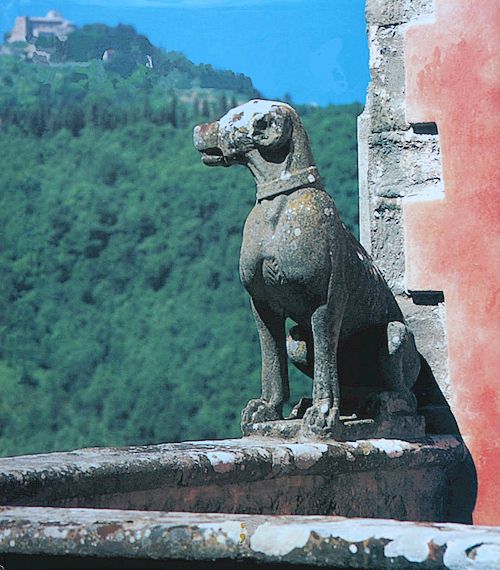In ancient times, meaning before WWII, most of the
contadini in Tuscany ate meat only once a week, mostly in the form of a
selection of salumi. For the remainder of the week they ate
ribollita in winter and
panzanella in summer - both dishes being based on
Tuscan bread and
Tuscan olive oil with the addition of whatever fresh vegetables were available. In fact, that's how it's been for the past thousand years, at the very least. Nowadays, the meat-based dishes of Tuscan cuisine are much more prominent and famous, and as a consequence so are some wonderful Tuscan butchers shops (
macellerie). In this post, I will say something about just two among many, the famous
Tuscan butchers Falorni in Greve in Chianti and Cecchini in Panzano in Chianti.
 |
Antica Macelleria Falorni in Greve in Chianti
|
Antica Macelleria Falorni, located on
Piazza Matteotti of Greve in Chianti, claims to be the oldest butchers shop (
macelleria) in Italy. The shop was founded by Gio Batta in 1729. Today Antica Macelleria Falorni is run by the eighth generation, brothers Lorenzo and Stefano Bencistà, related by marriage to the founding family. Along with fresh meat, Falorni sells a fine range of
salami,
prosciutto and other prepared meats and in fact the company has a large production that is sold throughout Italy and abroad. When you visit Greve in Chianti, be sure to drop in to look at the amazing display of Tuscan meat specialities on show at Macelleria Falorni, taste some samples if they're on offer and, of course, buy some great food!
 |
| Dario Cecchini in his butchers shop in Panzano in Chianti |
Macellaria Cecchini, located ten minutes drive away in
Panzano in Chianti, is entirely different in style from Macellaria Falorini. Macellaria Cecchini
is, simply, Dario Cecchini, the mad butcher of Panzano. Cecchini specialises in prepared meats, one could almost say, anything other than salumi. And in contrast to the export-oriented business of Falorni, Cecchini has entered the restaurant trade in a very original way, particularly in his Panzano restaurant
Solociccia. Dario Cecchini very often serves in his shop and welcomes visitors, even those just coming to look. While the display of meat products is amazing, you're basically coming to see Dario perform - and of course to buy some excellent eats.
Dario Cecchini is famous as a promoter of
bistecca alla fiorentina and both of these butchers shops sell excellent cuts of beef suitable for grilling.
More about Piazza Matteotti in Greve in Chianti.
More about Macellaria Cecchini in Panzano in Chianti.
More about bistecca alla fiorentina.
More about Tuscan culinary specialities.
More about places to stay in Chianti.
 |
Don't forget to visit Elena Spolaor's
Travel Guide!
Up-to-date news on what to see and where to stay in Chianti and all of Tuscany & Umbria.
Chianti Travel Guide
|
|
Author: Anna Maria Baldini











